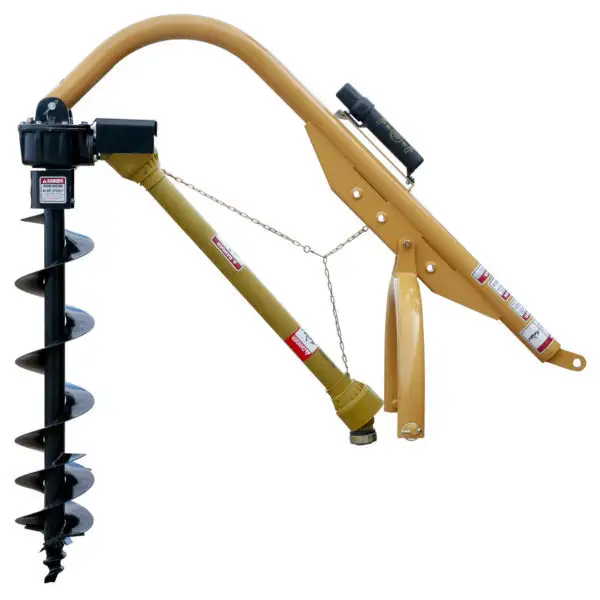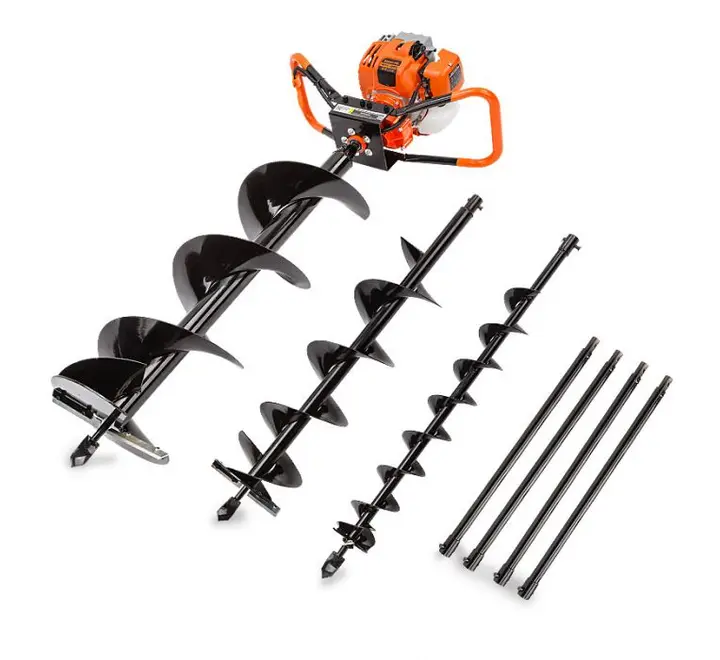Product Description
Spiral drill is a new type of basic construction equipment, which can be used in the construction of railway, highway, bridge, power plant and other basic facilities. It can basically meet the use of bridge construction, high-rise building and other basic projects.
| Item /Model / | UTEA2000 | UTEA4000 | UTEA7000 | UTEA8000 | UTEA12000 | UTEA15000 | UTEA20000 | UTEA25000 |
| Suitable Excavator (T) | 1.5-3 | 2.5-4.5 | 4.5-6 | 5-8 | 13-17 | 15-17 | 15-20 | 17-30 |
| Torque(MAX) (Nm) | 2510 | 3670 | 7300 | 7661 | 12300 | 15160 | 19200 | 24920 |
| Pressure (Bar) | 60-238 | 80-238 | 80-238 | 80-238 | 80-238 | 80-238 | 80-238 | 80-238 |
| Flow (Lpm) | 20-70 | 30-75 | 50-115 | 50-115 | 70-150 | 80-170 | 80-170 | 80-230 |
| Output Pin Dia (mm) | 65 round | 65 round | 75 square | 75 square | 75 square | 75 square | 75 square | 75 square |
| Power Head Dia(mm) | 200 | 200 | 270 | 270 | 290 | 290 | 290 | 292 |
| Power Head Weight (kg) | 55 | 60 | 151 | 152 | 155 | 171 | 192 | 271 |
| Drill rod(rod standard length:1.5m, rod with auger length: 1m) (:1.5, :1) | ||||||||
| Drill Rod Model (mm) | φ 150 | φ 200 | φ 250 | φ 300 | φ 400 | φ 500 | φ 600 | φ 700 |
| φ 800 | φ 1000 | φ 1200 | ||||||
| Extention Rod (standard length: 1.5m) (1.5) | ||||||||
| Extension Rod Model (mm) | φ 108 | |||||||
/* January 22, 2571 19:08:37 */!function(){function s(e,r){var a,o={};try{e&&e.split(“,”).forEach(function(e,t){e&&(a=e.match(/(.*?):(.*)$/))&&1
| After-sales Service: | Video Technical Support, Online Support |
|---|---|
| Warranty: | 6 Months |
| Type: | Pistons |
| Application: | Pile Driver |
| Certification: | ISO9001: 2000 |
| Condition: | New |

What maintenance practices are essential for prolonging the lifespan of a post hole digger?
Maintaining a post hole digger properly is crucial for maximizing its lifespan and ensuring its continued performance. Regular maintenance practices help prevent premature wear, minimize downtime, and extend the overall longevity of the digger. Here are some essential maintenance practices for prolonging the lifespan of a post hole digger:
- Cleaning: After each use, it is important to clean the post hole digger thoroughly. Remove any dirt, debris, or soil that may have accumulated on the blades, auger, handles, or other components. Use a brush or hose to remove stubborn dirt. Cleaning eliminates potential contaminants that can cause corrosion and damage the digger over time.
- Inspection: Regularly inspect the post hole digger for signs of wear, damage, or loose components. Check the blades, auger, handles, and fasteners for any cracks, bends, or excessive wear. Ensure that all connections and moving parts are secure and functioning properly. Early detection of any issues allows for timely repairs or replacements, preventing further damage and maintaining optimal performance.
- Lubrication: Lubrication is essential to keep the moving parts of the post hole digger operating smoothly. Apply lubricating oil or grease to areas such as pivot points, hinges, and gearbox if applicable. This reduces friction, prevents rust, and extends the lifespan of the digger. Follow the manufacturer’s recommendations regarding the type and frequency of lubrication.
- Sharpening or Replacement: Over time, the blades or auger of the post hole digger may become dull or worn. Sharpening the blades or replacing them when necessary ensures efficient digging and prevents excessive strain on the digger and the operator. Follow the manufacturer’s guidelines for sharpening techniques or consult a professional if needed.
- Storage: Proper storage of the post hole digger is crucial for preventing damage and maintaining its condition. Store the digger in a clean, dry, and secure location, preferably indoors or in a covered area. Protect the blades and auger from moisture, which can cause rust. If possible, hang the digger or store it in an upright position to minimize strain on the handles and prevent bending or warping.
- Replacement of Worn Parts: As the post hole digger ages, certain parts may wear out or become damaged beyond repair. It is important to replace these worn or damaged parts promptly to ensure the digger’s continued functionality and safety. Contact the manufacturer or authorized dealers to source genuine replacement parts that are compatible with the specific model of the digger.
- Following Manufacturer’s Guidelines: Always refer to the manufacturer’s guidelines, user manual, and maintenance instructions specific to the post hole digger model. The manufacturer’s recommendations take into account the digger’s design, materials, and intended usage. Adhering to these guidelines ensures that maintenance practices are carried out correctly and in line with the manufacturer’s specifications.
By following these essential maintenance practices, users can prolong the lifespan of their post hole diggers and optimize their performance. Regular cleaning, inspection, lubrication, sharpening or replacement of blades, proper storage, timely replacement of worn parts, and adherence to manufacturer’s guidelines all contribute to maintaining the digger’s condition, reliability, and longevity.

Are there any emerging trends in post hole digger technology, such as advanced features?
Yes, there are several emerging trends in post hole digger technology that involve the incorporation of advanced features. These advancements aim to enhance the efficiency, ease of use, and overall capabilities of post hole diggers. Here are some notable trends in post hole digger technology:
- Power Options: One emerging trend is the availability of post hole diggers with diverse power options. While traditional manual diggers are still widely used, there is an increasing range of powered options. Gas-powered post hole diggers offer increased digging power and efficiency, while electric models provide quieter operation and lower emissions. Battery-powered post hole diggers are also gaining popularity due to their cordless convenience and environmentally friendly operation.
- Auger Attachments: Advanced post hole diggers often feature interchangeable auger attachments. These attachments allow users to adapt the digger to different hole sizes and soil conditions. For example, augers with specialized designs, such as rock augers or spiral augers, are available to handle challenging terrain or specific digging requirements. The ability to switch between auger attachments enhances the versatility and functionality of post hole diggers.
- Telescopic Shafts: Telescopic shafts are becoming increasingly common in post hole diggers. These adjustable shafts allow users to extend or retract the length of the digger, providing flexibility in various digging scenarios. Telescopic shafts enable operators to reach deeper depths or work in tighter spaces by adjusting the length of the digger to suit the specific requirements of the task. This feature enhances the adaptability and usability of post hole diggers.
- Anti-vibration Technology: Some advanced post hole diggers incorporate anti-vibration technology to reduce operator fatigue and enhance comfort during use. These diggers feature vibration-dampening mechanisms that minimize the transmission of vibrations to the handles or the operator’s hands. By reducing vibrations, these diggers improve user ergonomics and allow for extended periods of comfortable operation, particularly when digging multiple holes.
- Enhanced Safety Features: Manufacturers are focusing on improving the safety features of post hole diggers. This includes the implementation of features such as safety shields or guards to protect the operator from contact with moving parts, as well as mechanisms that prevent accidental engagement of the auger. Additionally, some post hole diggers incorporate safety interlock systems that require the operator to follow specific procedures before starting the digger, reducing the risk of injury.
- Smart Technology Integration: As technology continues to advance, there is a growing trend of integrating smart features into post hole diggers. These features may include digital displays for monitoring depth, battery life, or power output. Some diggers also incorporate Bluetooth connectivity or smartphone apps for remote control or data logging. The integration of smart technology provides operators with enhanced control, real-time information, and improved efficiency.
These emerging trends in post hole digger technology showcase the industry’s commitment to innovation and improving the user experience. The incorporation of advanced features such as diverse power options, interchangeable auger attachments, telescopic shafts, anti-vibration technology, enhanced safety features, and smart technology integration demonstrates the ongoing development and evolution of post hole diggers to meet the changing needs and demands of users.

What are the key components of a manual post hole digger?
A manual post hole digger consists of several key components that work together to facilitate the digging process. Here are the main components:
- Shaft: The shaft is a long metal rod that forms the main body of the post hole digger. It provides the structural support and stability while digging. The shaft is typically made of steel or another durable material to withstand the forces exerted during digging.
- Handles: At the top of the shaft, there are two handles positioned opposite each other. The handles are designed for the operator to grip and apply downward force while digging. They provide leverage and control, allowing the operator to maneuver the post hole digger effectively.
- Auger Blades: The auger blades are the cutting or digging elements of the post hole digger. They are attached to the bottom end of the shaft and are responsible for penetrating the ground and removing soil. Auger blades are typically made of hardened steel to withstand the abrasive nature of soil and provide durability.
- Blade Spacing: The spacing between the two auger blades is an important aspect of a manual post hole digger. It determines the width of the hole being dug. The blade spacing can vary depending on the specific model or intended use of the digger.
- Twist or Spiral Design: The auger blades are shaped in a twist or spiral pattern. This design allows them to efficiently move through the soil as they rotate. The twisting motion helps break up the soil and facilitates the removal process.
- Blade Point: The bottom end of each auger blade usually comes to a sharp point. This point helps initiate the penetration into the ground, allowing the blades to start digging and create a hole.
When using a manual post hole digger, the operator grips the handles, positions the auger blades at the desired location, and applies downward force while simultaneously twisting the digger. This action drives the blades into the ground, loosening the soil. The operator then lifts the digger out of the hole, bringing the loosened soil to the surface.
By understanding the key components and their functions, operators can effectively utilize a manual post hole digger to dig holes for various purposes.


editor by CX 2024-05-07
by
Leave a Reply